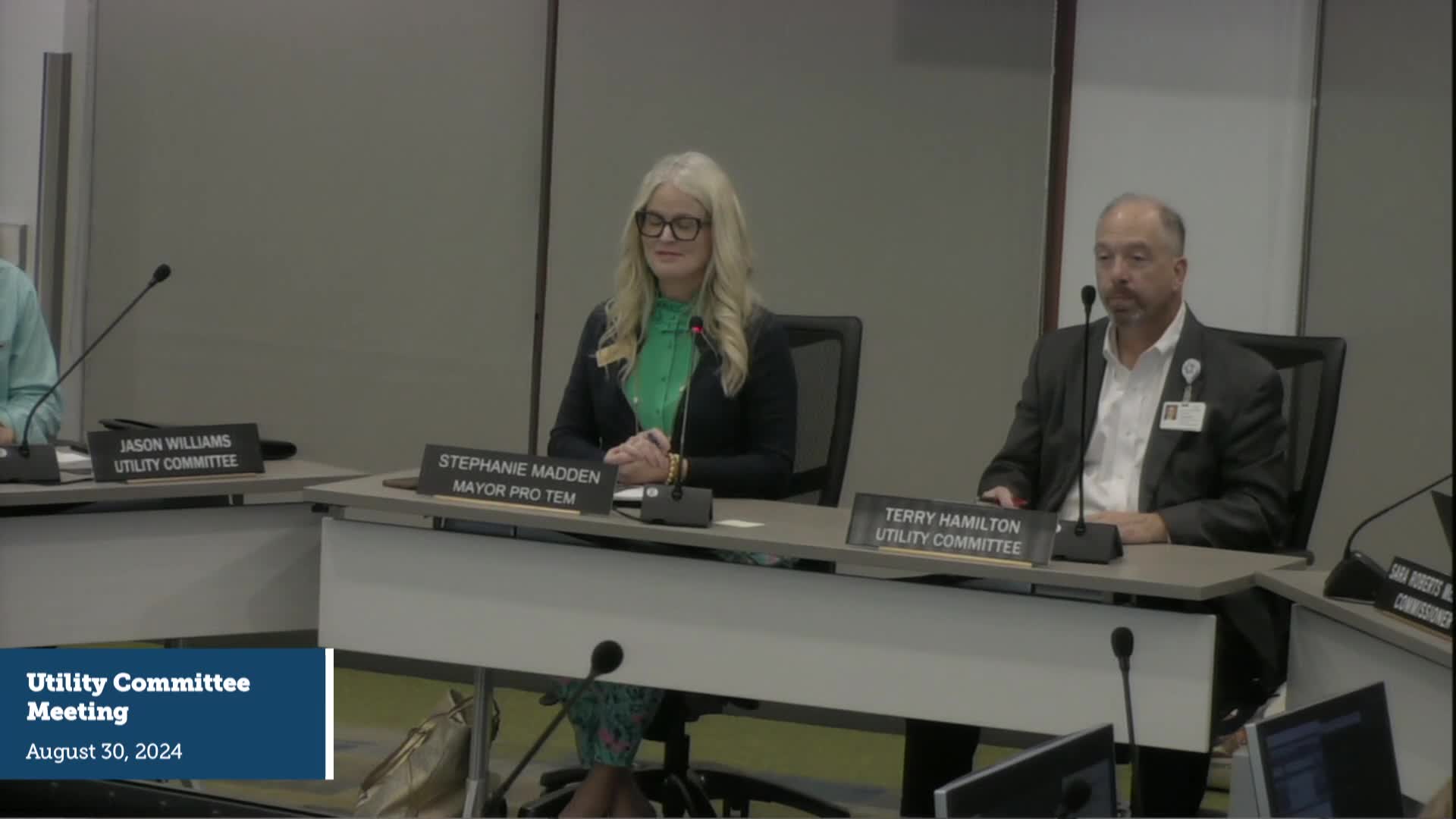Utility Committee Proposes Major Rate Reductions for Customers
August 30, 2024 | Lakeland City, Polk County, Florida
This article was created by AI summarizing key points discussed. AI makes mistakes, so for full details and context, please refer to the video of the full meeting. Please report any errors so we can fix them. Report an error »

During a recent utility committee meeting, significant discussions centered around proposed changes to environmental and fuel rates, as well as the financial outlook for the upcoming fiscal years.
Kelly Parrish, the forecasting and rates manager, announced a recommendation to reduce the environmental cost compliance charge by approximately 26%, lowering it from just over $1.50 to under $1.18 per megawatt. This adjustment is expected to result in an average monthly savings of about 49 cents for customers using 1,200 kilowatt hours. The change will take effect on October 1 and will be included in the FY 25 budget, with a resolution set for discussion at the September 16 commission meeting.
Sandra Reidy, from the fuels division, provided an update on market conditions, noting that the summer of 2024 has experienced extreme heat, which is expected to continue. She highlighted that the current storage levels are robust, with projections indicating a close-to-full capacity of 3,954 billion cubic feet (BCF) by the end of the season. However, forecasts for the winter of 2024-2025 suggest a potential decline in storage to 1,920 BCF, which would be the lowest in two years.
Reidy also addressed the impact of recent federal court rulings on liquefied natural gas (LNG) permitting, which could have long-term implications for the market. The Biden administration's halt on LNG permitting has faced legal challenges, with a federal judge ruling that states should continue permitting processes. This could affect competition for natural gas supplies, as existing LNG facilities are expected to ramp up operations.
William Strauss, assistant general manager of fiscal options at Lakeland Electric, presented analyses on the utility's cash reserves and rate structures. He noted that a previously approved 2.25% rate increase is set for implementation on October 1, 2024, for the 2025 fiscal year, but there are concerns about the financial outlook for 2026, as no rate increase has been approved for that year. The committee directed staff to explore various scenarios to assess the utility's cash flow and sustainability moving forward.
Overall, the meeting underscored the utility's proactive approach to managing rates and preparing for future market conditions, while also addressing customer impacts and financial stability.
Kelly Parrish, the forecasting and rates manager, announced a recommendation to reduce the environmental cost compliance charge by approximately 26%, lowering it from just over $1.50 to under $1.18 per megawatt. This adjustment is expected to result in an average monthly savings of about 49 cents for customers using 1,200 kilowatt hours. The change will take effect on October 1 and will be included in the FY 25 budget, with a resolution set for discussion at the September 16 commission meeting.
Sandra Reidy, from the fuels division, provided an update on market conditions, noting that the summer of 2024 has experienced extreme heat, which is expected to continue. She highlighted that the current storage levels are robust, with projections indicating a close-to-full capacity of 3,954 billion cubic feet (BCF) by the end of the season. However, forecasts for the winter of 2024-2025 suggest a potential decline in storage to 1,920 BCF, which would be the lowest in two years.
Reidy also addressed the impact of recent federal court rulings on liquefied natural gas (LNG) permitting, which could have long-term implications for the market. The Biden administration's halt on LNG permitting has faced legal challenges, with a federal judge ruling that states should continue permitting processes. This could affect competition for natural gas supplies, as existing LNG facilities are expected to ramp up operations.
William Strauss, assistant general manager of fiscal options at Lakeland Electric, presented analyses on the utility's cash reserves and rate structures. He noted that a previously approved 2.25% rate increase is set for implementation on October 1, 2024, for the 2025 fiscal year, but there are concerns about the financial outlook for 2026, as no rate increase has been approved for that year. The committee directed staff to explore various scenarios to assess the utility's cash flow and sustainability moving forward.
Overall, the meeting underscored the utility's proactive approach to managing rates and preparing for future market conditions, while also addressing customer impacts and financial stability.
View full meeting
This article is based on a recent meeting—watch the full video and explore the complete transcript for deeper insights into the discussion.
View full meeting